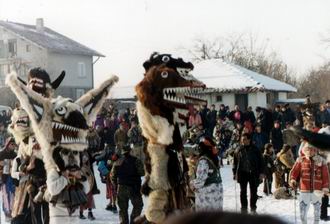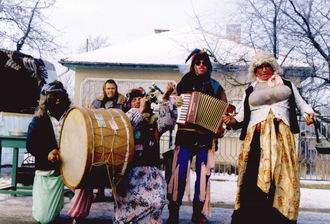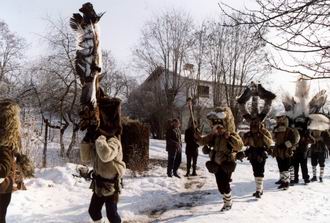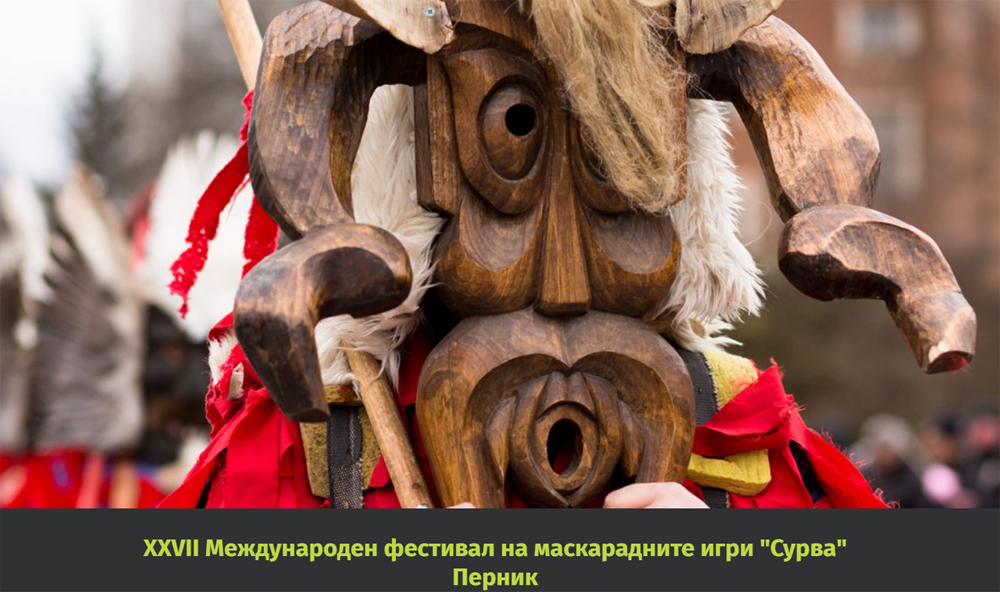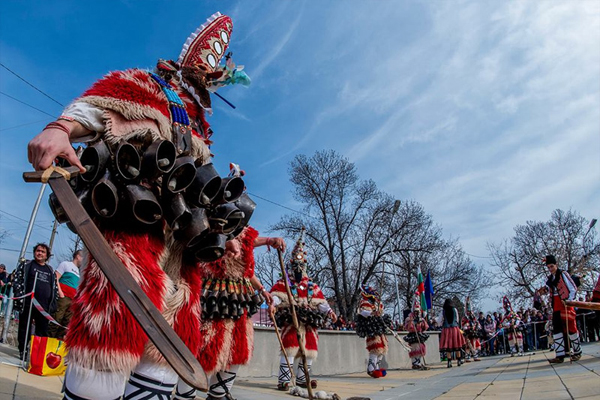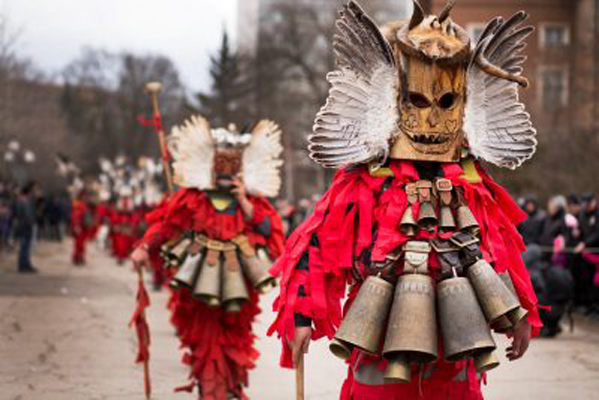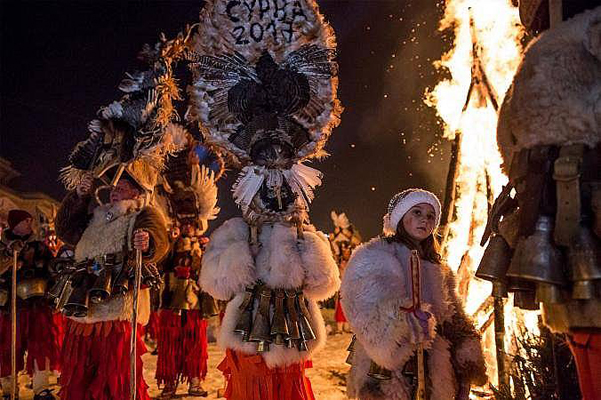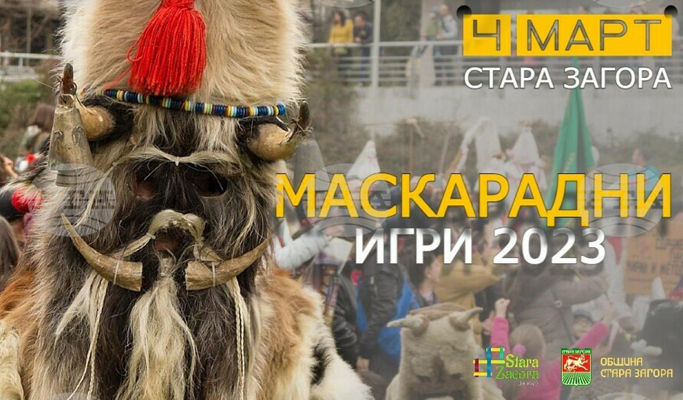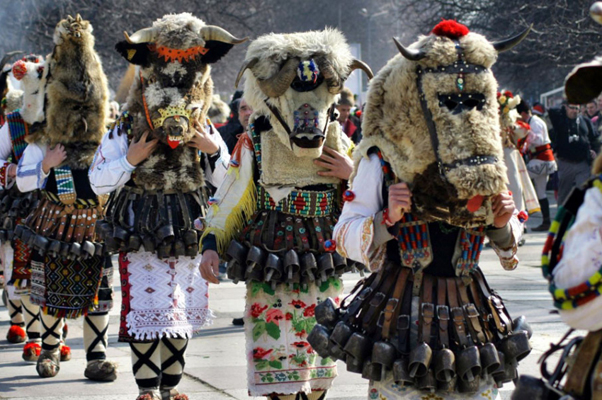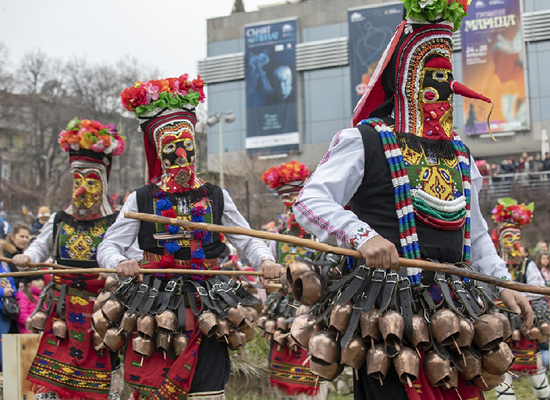Traditional masquerade games
The specific requirements were exactly followed - such as the fact that a cook can only be a man, and a bachelor /unmarried/ at that. In the Bulgarian lands, the first written records of similar customs with people disguised in animal skins were described in 303 by Dasius. It refers to the area around Silistra. In the 10th century, Presbyter Cosmas denounced his compatriots who succumbed to superstitions, idleness and preferred the sacrileges of games to the church and knowledge. The Kuker rite underwent changes and development over the centuries. It has its ups and downs, but it survives to this day as a kind of folk theater form. Despite their common pagan base and all-Bulgarian appearance, kukers and survakars have different regional characteristics. The costumes and masks, the characters and props, as well as the ritual actions are different. Even the names of the groups are different: "kukers", "hooks", "jamals", "old men", "starchinaris", "dervishes", "kamilaris", "arabs", "baburts", "babugers", "pesyatsi" , "maskari" etc., but the most popular are under the name kukeri. Usually, kuker games are held in the week between Meat and Cheese Markets and end on Cheese Sunday. Today, not only bachelors, but also married men and even women can join the team. The groups go around every home, building and yard, chasing away the evil forces with the sound of clappers and chans, as well as with the scary masks.
In Kazanlak area, Bulgaria the old men tie red or white ribbons on their hands, and on the soles of their feet - martens and bunches of boxwood. In Pazardzhik and some villages of Plovdiv region, the playing of jamala or rogach is connected with going through the homes. The motley and noisy group resounded through the village with thunder and rumble, going through the houses. The "bride" bows and kisses the hands of the owners, the "gypsies" beg for the "child" and receive gifts handed to them in a sieve so that the year will be full. The leader of Jamala the guards barely "hold" him. It is tied to a heavy hearth chain and guided with a club, saber, or crossbow. In every home, the hornet jumps madly and spins, then lies down tired on the floor. The owner waters it with water, and sometimes sprinkles it with wheat or corn. Then the jamal stands up again. It is a fertility ritual. The masked kukers "shave" with a wooden saber the master of the house to make him strong and strong. They lightly hit each member of the family with their sticks or jump over the brides with the little babies. According to beliefs, it brings health. Before sending off, the hosts treat the group with warm pita and mulled wine. The variety and specificity of masks and costumes is impressive. Every year the kuker makes a new costume for the crawl himself. This gives free rein to imagination and creativity. Kuker clothing and masks are made in the widespread zoomorphic-anthropomorphic style - made of goat or sheep skins. The mask resembles a horned animal that has sinister or sarcastic human features. Kukeri are armed with wooden sabers or clubs, and in some villages from Pazardzhik they also wear a hoop - a symbol of the horse's yoke /desired fertility/. An invariable attribute to the costume are the bells /bells and bells/. When heavy and large, they are few in number. When they are light and small - they are many. In the Kuker games, not only the ritual action changes, but also the ritual clothing and masks. They are the brightest part of the costume and carry an ideological and symbolic load. For more than a century, the systematic study of Kuker ritual games has continued. Many local historians and ethnographers such as Mihail Arnaudov, Petar Petrov, Georg Kraev, St. Genchev, T. Koleva, D. Marinov and others. have devoted works to this ritual.
Festival of masquerade games Surva Pernik 2023
Bulgarian Kukeri - Jordanovi ART and Friends
Stara Zagora Masquerade Games - March 4, 2023
XXVII International Festival of Masquerade Games "SURVA" Pernik, Bulgaria






